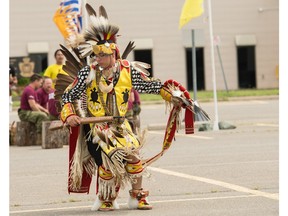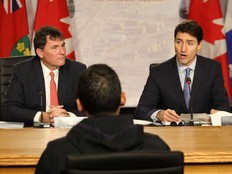Seeking an Indigenous tourist experience
Demand grows for First Nations tourism but not enough businesses are offering such fare, says industry leader

Article content
Keith Henry says Canadian and international visitors are hungry to take in more Indigenous experiences, whether it’s a dance, cultural workshop or food tasting.
The president of the Indigenous Tourism Association of Canada says although they’ve flocked in recent years to places such as the Metepenagiag Heritage Park and the Elsipogtog Mi’gmaw Cultural Centre in eastern New Brunswick, there’s room to showcase far more.
His organization’s surveys show that as many as eight in 10 Canadians and half of Americans are interested in Indigenous tourism experiences.
“The Metepenagiag Heritage Park in Red Bank does cultural tours, has a gift shop, it offers a heritage site. It’s got the right facilities, with teepees and walking tours,” Henry said from Vancouver in a recent interview. “We need to build more infrastructure like that, to create a destination location where people want to stop there and spend more time there and learn there.”
After peaking in 2019, the tourism industry as a whole was bludgeoned by the pandemic in 2020 and 2021, and Indigenous tourism sites were no different, with many businesses laying off staff and going into survival mode.
But business has come roaring back the last couple of years, nearing the pre-pandemic peak. And while Ottawa and the Tourism Industry Association of Canada have set a goal of increasing tourism by 40 per cent by 2030, for a total of $61 billion, Henry’s organization has set an even loftier target within it.
I don’t think people realize all the economic opportunity out there in Indigenous tourism.
Keith Henry
Based on the surveys, his organization believes Indigenous tourism can triple from its 2019 pandemic peak of $1.9 billion in revenues to $6 billion by 2030.
New Brunswick’s share of the pie, Henry says, would include the creation of 22 more Indigenous businesses and hiring 470 employees by the end of the decade.
“I don’t think people realize all the economic opportunity out there in Indigenous tourism,” said Henry, a Métis who’s originally from Prince Albert, Saskatchewan. “We don’t have enough access to capital to build these projects. And we know that there’s more opportunities there. But it will take additional resources.”
The lack of capital is one of the reasons his organization this past summer created the Indigenous Tourism Destination Fund that will allow entrepreneurs to tap into it. It has already signed up 30 different partners to help boost the fund, including Airbnb, which pumped in $50,000.
We see this as a big potential market.
Matt McNama
Matt McNama, an Airbnb spokesman from Canada, said his publicly-traded company sees the benefit of more Indigenous businesses offering tourism experiences because of a surge in home and apartment rentals in rural communities during the pandemic, when people were staying closer to home but also wanted a special experience. Many of these same places are not near hotels or motels.
“We see this as a big potential market,” McNama said, pointing out that from 2018 to 2022, nights booked for listings within Indigenous communities increased by 50 per cent in Canada and a whopping 200 per cent in the United States.
Last year alone, Airbnb hosts sharing their homes within Indigenous communities collectively earned nearly $4 million in Canada.
Elsipogtog won the Tourism Industry Association of Canada’s 2022 Indigenous tourism award for its heritage path, an honour that will lure more visitors to New Brunswick, benefiting the overall economy, Henry said.
“They’ve been working on cultural content, and there’s tremendous demand for that. So what we’re trying to do is work with the First Nations in New Brunswick, whether Wolastoqey or Mi’kmaq, so that they really understand the opportunities.”

Henry believes Canadians in general want to see what First Nations communities have to offer because of some of the hardships that have been the focus of so many news stories.
“We think it’s because of the residential school discoveries and people are really trying to reconcile some of the unfortunate history in this country.”
He said internationally, visitors have always expressed an interest in Indigenous Canadian culture, but now that interest is getting stronger.
“We’re seeing metrics where it’s one in two or one in three people – in Germany, France or U.K, or U.S., Japan, Australia – in those international markets where we are trending higher and higher. A lot of the visitors want to see the original history of our country and there’s a growing interest in Indigenous communities in this country.
“The metrics are high but quite honestly, we don’t have enough businesses to meet that demand today. That’s what we have to work on.”












Postmedia is committed to maintaining a lively but civil forum for discussion. Please keep comments relevant and respectful. Comments may take up to an hour to appear on the site. You will receive an email if there is a reply to your comment, an update to a thread you follow or if a user you follow comments. Visit our Community Guidelines for more information.